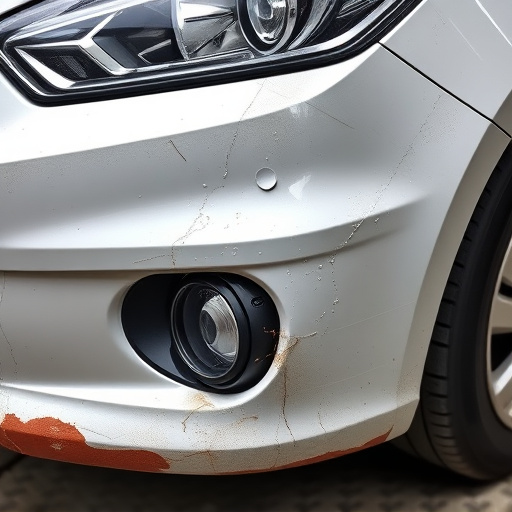Silicon bronze welding is a specialized technique using a silicon-based alloy for secure and aesthetic metal fusion, particularly beneficial for thin materials due to superior bonding strength and flexibility. It offers auto detailing professionals precise cuts, seamless fusions, and long-lasting results without compromising material integrity or original appearance, addressing common challenges in auto body services. This method is gaining popularity in thin metal fabrication across sectors, ensuring structural strength and longevity with robust bonding capabilities, ideal for demanding applications like automotive and collision repairs.
Silicon bronze welding is a game-changer for thin metal fabrication, offering unique advantages due to its exceptional properties. This article delves into the world of silicon bronze welding, exploring why it’s ideal for delicate materials. We’ll discuss its role in processing thin metal sheets, from enhancing strength and corrosion resistance to ensuring precision and aesthetics. Discover the benefits and considerations that make this technique a top choice for modern manufacturers.
- Understanding Silicon Bronze Welding: Properties and Advantages for Thin Metals
- Application of Silicon Bronze Welding in the Processing of Thin Metal Sheets
- Benefits and Considerations for Adopting Silicon Bronze Welding Techniques in Thin Metal Fabrication
Understanding Silicon Bronze Welding: Properties and Advantages for Thin Metals

Silicon bronze welding is a specialized technique that involves fusing metal components using a silicon-based alloy. This process isn’t just about joining metals; it’s an art that leverages the unique properties of silicon bronze to create robust and aesthetically pleasing connections, especially for thin metallic materials. The key advantage lies in its superior bonding strength, ensuring that even delicate metal sheets remain securely attached after welding.
For auto detailing and car paint services professionals who work with intricate metal structures, silicon bronze welding offers a game-changer. It allows for precise, clean cuts and seamless fusions, preserving the integrity of the material while enhancing its structural stability. Unlike traditional welding methods that may distort thin metals, silicon bronze’s flexibility and resistance to corrosion make it an ideal choice, ensuring long-lasting results without compromising the original appearance—a far cry from the challenges often associated with auto body services when dealing with delicate components.
Application of Silicon Bronze Welding in the Processing of Thin Metal Sheets

Benefits and Considerations for Adopting Silicon Bronze Welding Techniques in Thin Metal Fabrication

Silicon bronze welding offers a range of benefits for thin metal fabrication, making it an increasingly popular choice in various industries. One of its key advantages is the strong bond it creates between metals, ensuring structural integrity and durability, which is vital in demanding applications like automotive repair and collision repair services. This technique is particularly suited for thin materials due to its ability to fill gaps and create seamless connections without compromising the metal’s strength or stability.
When adopting silicon bronze welding techniques, consider the material compatibility and preparation. It requires clean, dry surfaces free from contaminants to achieve optimal results. Proper joint design and preparation play a crucial role in successful welds, ensuring the metal remains thin and delicate while maintaining structural soundness. This method also offers cost-effectiveness for vehicle repair services and collision repair shops, as it reduces material waste and simplifies the fabrication process compared to traditional welding techniques.
Silicon bronze welding has emerged as a game-changer in thin metal fabrication, offering unparalleled advantages due to its unique properties. Its superior bonding strength and corrosion resistance make it ideal for intricate designs and delicate materials. By adopting silicon bronze welding techniques, manufacturers can achieve precise, robust connections, ensuring the structural integrity of thin metal sheets across various industries. This innovative approach not only streamlines production but also opens up new possibilities for creating complex components with enhanced durability.














